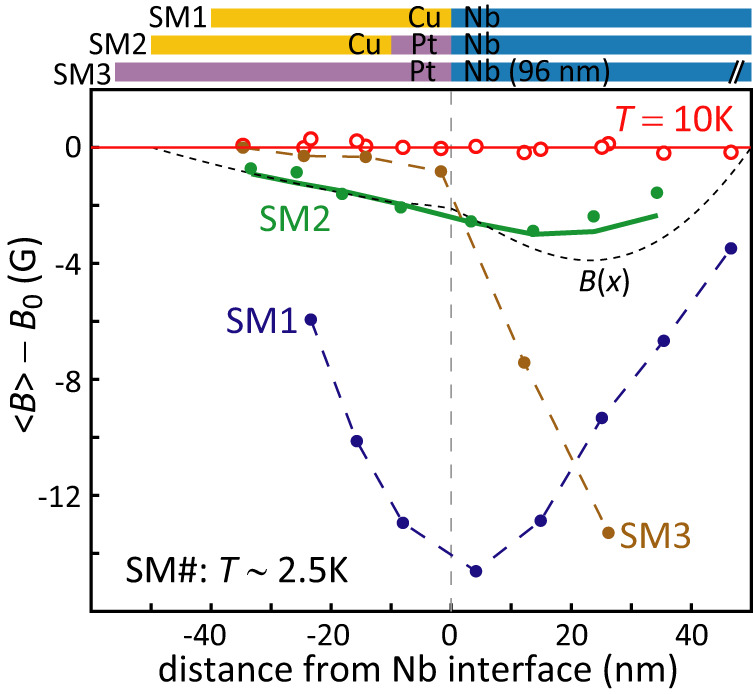Fig. 2. Low-energy muon-spin rotation data for the average flux density 〈B〉 as function of average muon implantation depth 〈x〉 relative to the superconducting interface for Cu(40)/Nb(50) (SM1), Cu(40)/Pt(10)/Nb(50) (SM2) and Pt(56)/Nb(96) (SM3), with numbers indicating the layer thickness in nm.

Flux densities are presented relative to applied magnetic field B0 (which is observed in all samples at T = 10 K with Nb in the normal state). In SM1, Cooper pairs diffuse far into the Cu due to its relatively long coherence length (ξs ~ 100 nm) and flux screening develops well into the Cu. In SM2, the addition of the 10 nm thin Pt layer (which has a much shorter ξs ~ 10 nm) shows a significant reduction of the flux screening. The SM2 data are modeled with a theoretical B(x) (see text) which predicts the solid line for its corresponding 〈B〉 values. In SM3 the thicker Nb layer greatly enhances screening inside the Nb layer, however, the absence of screening near the Pt/Nb interface is unanticipated and is one of the key results presented in this paper. For all data points, error bars fit within the symbols used.
